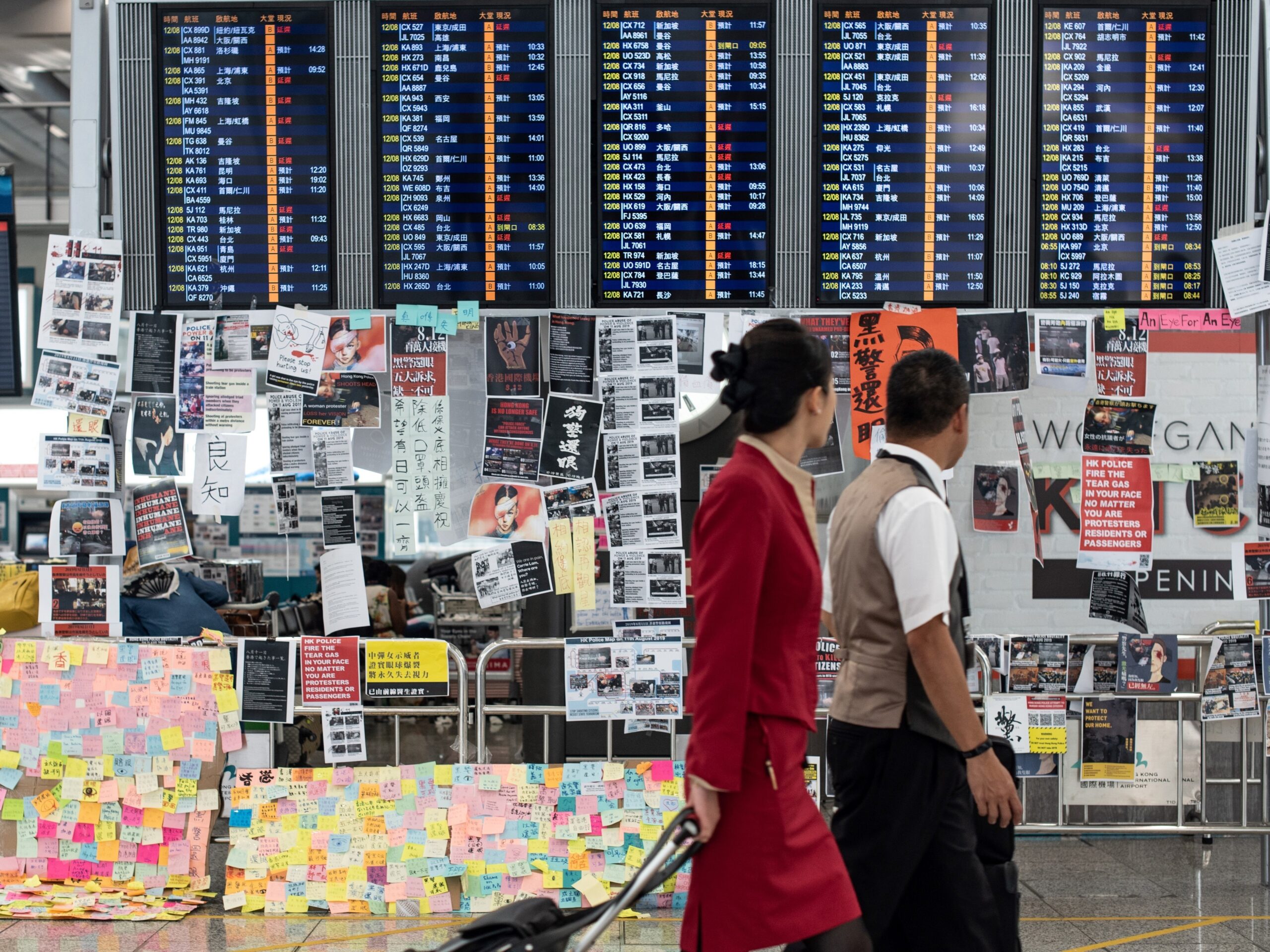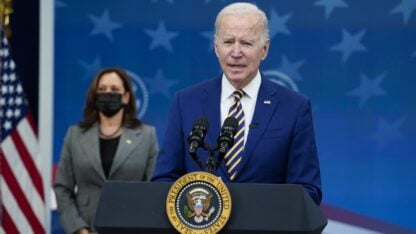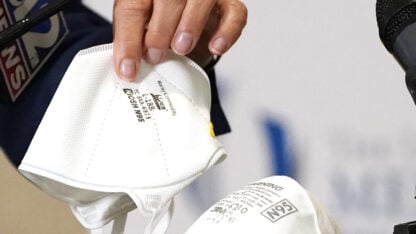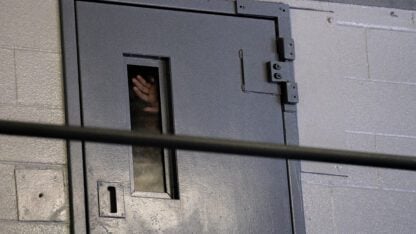Protesters Return To Hong Kong’s Airport, Causing Flight Cancellations For 2nd Day

Two flight attendants walk past a display board covered with memos and posters at Hong Kong’s international airport on Tuesday, a day after the airport closed due to pro-democracy protests.
Philip Fong / AFP/Getty Images
Updated at 5:30 a.m. ET
Pro-democracy protesters on Tuesday returned in force to Hong Kong’s international airport, forcing it to cancel all flights for a second day amid a massive sit-in that has paralyzed one of the world’s busiest aviation hubs.
Hong Kong’s Airport Authority announced late Tuesday afternoon that check-in services had been suspended.
In a statement, the authority said “Airport operations … have been seriously disrupted, all departures have been cancelled. All passengers are advised to leave the terminal buildings as soon as possible.”
Early Tuesday, airport operations initially appeared to be slowly returning to normal after protests on Monday led to more than 300 flights being cancelled.
By Tuesday afternoon, however, hundreds were again occupying the airport’s departure areas, disrupting check-ins and security clearing. Meanwhile, at least 1,000 activists were still in the arrivals area of the airport, according to The South China Morning Post.
Frustrated passengers, holding their luggage above the seated demonstrators, tried to navigate the sea of protesters.
Following a police crackdown on protests elsewhere in the city over the weekend, the airport sit-in — which began on Friday and was meant to last three days — was briefly expanded, spilling over into the departures hall, but then seemed to tail off. By Tuesday afternoon in Hong Kong, however, the crowds of protesters had returned.
A total of 310 flights were cancelled in the 24 hours from midnight Monday in Hong Kong, according to the Post, a Hong Kong-based English-language daily.
Although the days of demonstrations in the airport were peaceful, police responded with force to protests in other parts of the city. Officers stormed a subway station at Kwai Fong, located in the city’s northern New Territories, firing tear gas and beating protesters with batons.
In a protest on Sunday, one activist, a young woman, reportedly suffered a serious eye injury when police fired non-lethal rounds at protesters. Some of the protesters donned eye patches in sympathy with the injured woman.
Hong Kong’s chief executive, Carrie Lam, defended police action against the demonstrators, saying authorities were trying to use “the lowest level of force” to deal with the protesters. But she echoed ominous statements last week from Beijing, warning that violence would lead Hong Kong “down a path of no return.”
Speaking at a news conference on Tuesday, Lam said the demonstrations, now in their tenth week, had pushed the city into “a state of panic and chaos.”
“Hong Kong, as an open, free, very tolerant, economically stable city will see severe wounds,” she predicted.
“After the violence has been stopped and the chaotic situation subsides… I will be responsible [for] rebuilding Hong Kong’s economy, to listen as attentively as possible to my people’s grievances and [for] trying to help Hong Kong to move on,” she said.
Lam’s comments followed a second week of strong admonishments from Beijing. Yang Guang, a spokesman for China’s Hong Kong and Macau Affairs office, stepped up his harsh words about the protests, saying they “constituted serious crimes with sprouts of terrorism emerging.”
Meanwhile, the People’s Daily, considered a mouthpiece of the country’s ruling Communist Party, tweeted video of armored personnel carriers and other military vehicles rolling into Shenzhen, immediately adjacent to Hong Kong.
Hong Kong, a former British colony, was returned to China in 1997 under an agreement between London and Beijing guaranteeing the city a high degree of autonomy. Under a pledged “one country, two systems” approach, China was to allow Hong Kong to pass its own laws and maintain its own judicial system.
However, pro-democracy activists say Beijing has reneged on many of those promises and that Hong Kong’s China-appointed chief executive and hand-picked Legislative Council have become a rubber stamp for Beijing.
The latest protests were sparked by an extradition law that would have allowed some people accused of crimes in Hong Kong to be tried in mainland China. Although the Hong Kong government has backed off the proposed law, protesters want to see it killed altogether. Their demands have also expanded to include a freely elected legislature and direct elections for the chief executive.
9(MDAxODM0MDY4MDEyMTY4NDA3MzI3YjkzMw004))








